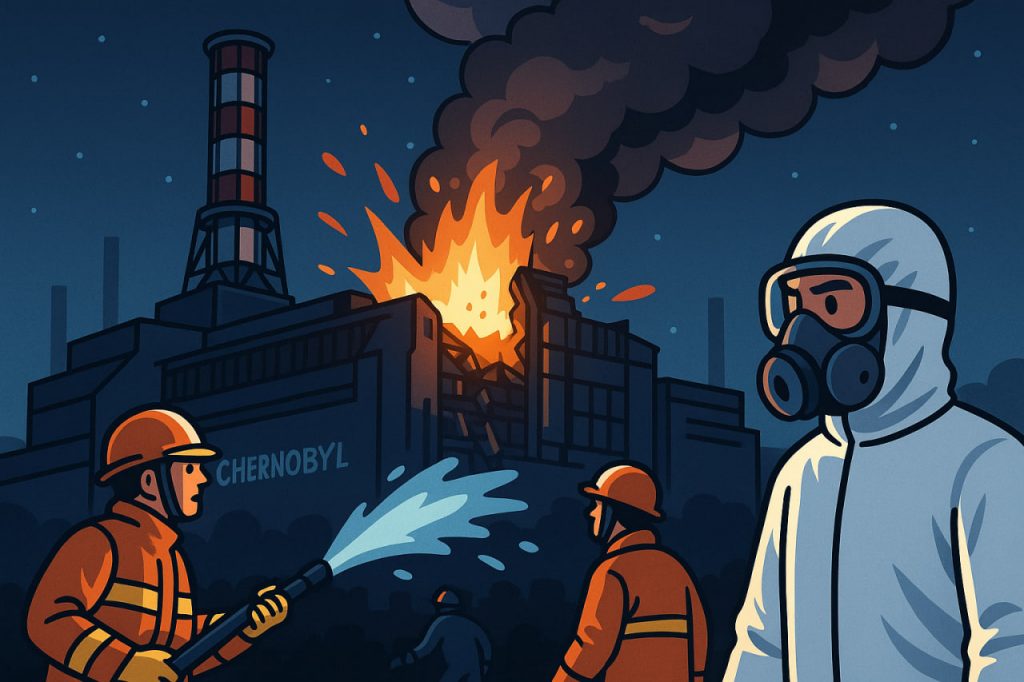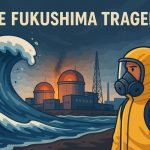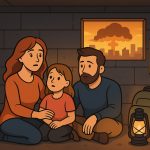On April 26, 1986, at 1:23 a.m., the world witnessed one of the most catastrophic technological accidents in history—the explosion at Reactor No. 4 of the Chernobyl Nuclear Power Plant in Pripyat, Ukraine. What began as a late-night safety test quickly spiraled into a disaster that released massive amounts of radioactive material into the atmosphere, contaminating large parts of Europe. The Chernobyl tragedy reshaped the global perception of nuclear power, exposed the dangers of secrecy and negligence, and forever changed how humanity approaches atomic energy and environmental safety.
How the Accident Happened
The Chernobyl disaster occurred during a routine safety test meant to simulate a power outage. Engineers were testing whether the reactor’s turbines could generate enough electricity to keep cooling systems running until backup generators started. Due to design flaws in the RBMK reactor and a series of human errors, the test went disastrously wrong. When operators shut down key safety systems and reduced power too low, the reactor became unstable. At 1:23 a.m., an uncontrolled power surge caused two massive explosions that blew off the reactor’s 1,000-ton lid. A fire erupted, releasing radioactive particles into the air.
The Immediate Aftermath
The explosion killed two plant workers instantly and severely irradiated dozens more. Firefighters rushed to extinguish the blaze without knowing the danger they faced—most received lethal doses of radiation. In the following days, 28 emergency workers died from acute radiation sickness. The Soviet authorities delayed public acknowledgment of the disaster, evacuating the nearby city of Pripyat only 36 hours later. By then, radioactive clouds had spread across Belarus, Russia, and beyond Europe. The delay in response contributed to widespread contamination and lasting health consequences.
The Scale of Radioactive Contamination
Chernobyl released an estimated 400 times more radiation than the atomic bomb dropped on Hiroshima. Radioactive isotopes such as iodine-131, cesium-137, and strontium-90 contaminated air, soil, and water across vast regions. More than 200,000 square kilometers of Europe were affected. In some areas, radiation levels exceeded safe limits by thousands of times. Animals, crops, and ecosystems were poisoned, and the fallout forced the permanent evacuation of over 300,000 people. The Chernobyl Exclusion Zone—spanning 2,600 square kilometers—remains largely uninhabitable to this day.
Human and Environmental Consequences
The long-term health effects of Chernobyl are still being studied. Thousands of cases of thyroid cancer, particularly among children, have been linked to radioactive iodine exposure. Many survivors suffer from chronic illnesses, immune system disorders, and psychological trauma. Entire communities were uprooted, leaving behind ghost towns like Pripyat, frozen in time. Wildlife in the exclusion zone initially suffered devastating losses, but over the decades, nature has shown remarkable resilience. Today, the area has transformed into an accidental wildlife refuge, home to wolves, bison, and rare bird species thriving without human interference.
The Global Impact and Lessons Learned
The Chernobyl disaster forced the world to confront the risks of nuclear energy and the dangers of political secrecy. The International Atomic Energy Agency (IAEA) and other global organizations introduced stricter safety standards and international communication protocols for nuclear incidents. The tragedy also accelerated anti-nuclear movements in many countries, leading to the shutdown of older reactors and the redesign of existing ones. In 2016, a massive steel structure called the New Safe Confinement was installed over the damaged reactor to contain remaining radiation for the next 100 years.
Expert Perspectives
According to Dr. Robert Gale, a medical expert who treated victims after the explosion, “Chernobyl was not just a technical failure—it was a human failure born from arrogance and secrecy.” Nuclear physicist Dr. Valery Legasov, who led the initial investigation, became a symbol of truth-telling when he publicly exposed flaws in the Soviet nuclear system. His later death by suicide, believed to be linked to guilt and frustration, highlighted the immense psychological toll of the catastrophe. Modern scientists stress that Chernobyl remains a lesson in humility—proof that even advanced technologies can fail catastrophically when human judgment falters.
Chernobyl’s Legacy in Modern Culture
Chernobyl has left an indelible mark on global culture. Films, documentaries revived public awareness of the disaster, portraying the heroism of those who risked their lives to contain it. The haunting images of abandoned schools, overgrown playgrounds, and silent apartment blocks serve as both a memorial and a warning. Chernobyl symbolizes not only technological failure but also the resilience of humanity—the bravery of workers, doctors, and scientists who prevented an even greater catastrophe.
Hope and Renewal
Today, Chernobyl stands as a paradox of destruction and renewal. While radiation remains a silent danger, the site also demonstrates nature’s incredible adaptability. Trees have reclaimed the streets of Pripyat, animals roam freely, and the forests echo with life. Scientists continue to monitor the area, learning how ecosystems recover after extreme contamination. Chernobyl has become a living laboratory—a place where humanity studies both the consequences of its mistakes and the power of recovery.
Interesting Facts
- The explosion released 5% of the reactor’s radioactive core into the atmosphere.
- The city of Pripyat had nearly 50,000 residents, evacuated within two days.
- The radioactive cloud reached as far as Sweden, alerting the world to the accident.
- Over 600,000 people, known as “liquidators,” worked to contain the disaster.
- The Chernobyl Exclusion Zone will remain unsafe for human habitation for tens of thousands of years.
Glossary
- RBMK Reactor – A Soviet-designed nuclear reactor type known for instability under low power.
- Acute Radiation Sickness (ARS) – Severe illness caused by high-dose radiation exposure.
- Radioisotope – A radioactive form of an element that decays over time.
- Exclusion Zone – A restricted area around a nuclear accident site to limit exposure.
- New Safe Confinement – The steel structure built to cover the damaged Chernobyl reactor.
- Thyroid Cancer – A cancer type linked to exposure to radioactive iodine.
- Fallout – Radioactive particles that descend to the ground after a nuclear explosion.
- Decontamination – The process of removing radioactive materials from surfaces or environments.
- Liquidators – Workers who cleaned and contained radioactive materials after the explosion.
- Reactor Core – The part of a nuclear reactor where fission reactions occur.


